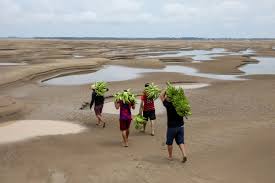Global concern is growing, with scientific evidence showing that soil across earth’s landscapes is losing its moisture, resulting in a potential irreversible condition. This phenomenon has direct ties to climate change and can lead to various negative consequences, including agriculture disruption, increased desertification and potential detriment to ecosystems.
The relentless heatwaves and extended periods of drought in numerous locations around the globe have given rise to concerns about the drying soil. In management of land and water resources, soil moistures play a vital role. It affects food production and availability of clean drinking water. The scenario is further exacerbated in locations where rainfall is expected seasonally and is vital for crop production.
The European Space Agency’s Soil Moisture and Ocean Salinity satellite data revealed that the soil moisture between 2010 and 2018 was around 35% less than a decade ago. The report also highlighted that a consistent decrease in soil moisture was observed in various parts of Europe and Asia. Furthermore, serious water shortage problems were observed in areas with high population density in these regions, such as Southern Europe and East Asia.
Some bodies of water are no longer able to replenish the soil, leading to more occurrences of drought and thus lowering the ability of the earth’s surface to support plant life. This situation is further worsened by over-farming and excessive use of water for agriculture.
Nonetheless, the scientists warn that certain levels of soil dryness may be irreversible, pushing the ecosystems beyond points of recovery. Among the significant projections is that by 2040, half of the world’s populated areas may face severe water scarcity. This will certainly impact agriculture and lead to food shortages around the globe – another grim outfall of climate change.
Researchers are urging policymakers to take immediate action and rethink approaches to water and land management. There is a need to adopt sustainable farming practices and manage water resources effectively to mitigate the adverse impacts of soil drying. However, scientists across the world agree that the only real solution is to address climate change head-on to prevent the negative ripple effects on all sectors, including soil health.
climate change drying soil soil moisture sustainable farming practices water scarcity
Last modified: March 30, 2025



